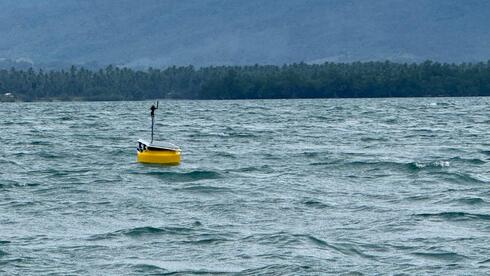Smoke from Canadian wildfires prompts air quality alert across Minnesota until late Friday – St. Cloud Times

Report on Air Quality Alert in Minnesota and Alignment with Sustainable Development Goals
An air quality alert has been issued for the state of Minnesota, effective until 11 p.m. on July 25. This report details the alert, its public health implications, and its direct relevance to the United Nations Sustainable Development Goals (SDGs), particularly SDG 3 (Good Health and Well-being), SDG 11 (Sustainable Cities and Communities), and SDG 13 (Climate Action).
Environmental Conditions and Impact on SDGs
The Minnesota Pollution Control Agency has identified a significant band of smoke from Canadian wildfires as the primary cause of the deteriorating air quality. This event underscores the transboundary nature of environmental challenges and highlights critical issues addressed by the SDGs.
- SDG 13: Climate Action: The increasing frequency and intensity of wildfires are linked to climate change. This alert serves as a direct consequence of climate-related disasters, emphasizing the urgent need for global climate action to mitigate such events.
- SDG 15: Life on Land: The wildfires causing the pollution represent a significant threat to terrestrial ecosystems, biodiversity, and sustainable forest management.
Air quality in northern and central Minnesota is projected to reach the red category on the Air Quality Index (AQI), indicating conditions that are unhealthy for the entire population. The smoke is expected to persist until southerly winds facilitate gradual improvement.
Public Health Advisory and Contribution to SDG 3: Good Health and Well-being
The primary objective of the public health advisory is to protect human health, a core tenet of SDG 3. The alert provides critical information to help residents avoid adverse health effects associated with poor air quality.
Vulnerable Populations
In alignment with SDG 3’s goal to ensure healthy lives for all, the agency has identified specific groups at heightened risk from exposure to airborne pollutants. These groups include:
- Individuals with pre-existing respiratory conditions such as asthma or chronic obstructive pulmonary disease (COPD).
- Individuals with heart disease, high blood pressure, or diabetes.
- Pregnant people.
- Children and older adults.
It is also recommended that individuals engaged in outdoor work or strenuous physical activities exercise caution to minimize exposure.
Air Quality Index (AQI) as a Tool for Sustainable Communities (SDG 11)
The Air Quality Index (AQI) is an essential tool for communicating health risks to the public, contributing to the creation of safe, resilient, and sustainable communities as outlined in SDG 11. By providing a clear, color-coded system, the AQI empowers citizens to make informed decisions to protect their health.
AQI Categories and Health Implications
- Green (0-50): Good. Air pollution poses little to no risk.
- Yellow (51-100): Moderate. A potential risk exists for individuals unusually sensitive to air pollution.
- Orange (101-150): Unhealthy for Sensitive Groups. The general public is not likely to be affected, but vulnerable populations may experience health effects.
- Red (151-200): Unhealthy. All individuals may begin to experience adverse health effects; sensitive groups may experience more serious effects.
- Purple (201-300): Very Unhealthy. This triggers a health alert, signifying that the risk of health effects is increased for everyone.
- Maroon (301+): Hazardous. This represents a health warning of emergency conditions where the entire population is likely to be affected.
SDGs Addressed in the Article
-
SDG 3: Good Health and Well-being
The article directly addresses public health by detailing the health risks associated with poor air quality from wildfire smoke. It specifies vulnerable groups (people with asthma, heart disease, pregnant people, children, older adults) and recommends precautionary measures, connecting directly to ensuring healthy lives.
-
SDG 11: Sustainable Cities and Communities
The focus on air quality within a specific region (Minnesota) relates to making human settlements safe and sustainable. The article discusses the “Air Quality Index” and its implications for the general public in populated areas, which aligns with the goal of reducing the adverse environmental impact of cities, particularly concerning air quality.
-
SDG 13: Climate Action
The article identifies wildfires as the source of the air pollution. Wildfires are a type of climate-related natural disaster, the frequency and intensity of which are often linked to climate change. The issuance of an “air quality alert” is a form of adaptive action to cope with the impacts of such disasters.
-
SDG 15: Life on Land
The underlying cause of the smoke is wildfires, which directly impact terrestrial ecosystems. The article mentions the “Dragon Bravo Fire” destroying a lodge and structures in a national park, highlighting the destructive effect of fires on forests and protected areas, which is a key concern of SDG 15.
Specific SDG Targets Identified
-
Target 3.9: Substantially reduce the number of deaths and illnesses from hazardous chemicals and air, water and soil pollution and contamination.
The article’s core message is about the health effects of air pollution from smoke. It describes the air quality as “unhealthy for everyone” in certain areas and lists specific health conditions (asthma, heart disease) that are aggravated by the pollution, directly aligning with the goal of reducing illnesses from air contamination.
-
Target 3.d: Strengthen the capacity of all countries… for early warning, risk reduction and management of national and global health risks.
The Minnesota Pollution Control Agency’s issuance of an “air quality alert” is a clear example of an early warning system designed to manage a public health risk. The article explains the alert’s duration and purpose, which is to inform the public and sensitive groups to take precautions, thereby reducing health risks.
-
Target 11.6: Reduce the adverse per capita environmental impact of cities, including by paying special attention to air quality.
The entire article is centered on monitoring and reporting air quality in Minnesota. The use of the Air Quality Index (AQI) to inform the public about pollution levels is a direct implementation of paying special attention to air quality to mitigate its adverse effects on the population.
-
Target 13.1: Strengthen resilience and adaptive capacity to climate-related hazards and natural disasters in all countries.
The article discusses the impact of wildfires, a climate-related hazard. The public alert system and the advice for citizens to limit outdoor time are measures that build resilience and help the population adapt to the immediate consequences of these disasters.
Indicators for Measuring Progress
-
Air Quality Index (AQI)
The article explicitly defines the AQI as a “color-coded tool that indicates the level of air pollution and its associated health effects.” It details the six categories (Green, Yellow, Orange, Red, Purple, Maroon) and their numerical ranges. The article states that the air quality was expected to reach the “red Air Quality Index category,” making the AQI a direct indicator used to measure the level of air pollution discussed.
-
Issuance of Air Quality Alerts
The article begins by stating, “An air quality alert will be in effect across all of Minnesota…” The issuance, duration, and frequency of such alerts serve as an indicator of both the occurrence of severe air pollution events and the capacity of authorities to provide early warnings (relevant to Target 3.d).
-
Number of Structures Destroyed by Wildfires
The article’s video promo brief mentions that the Dragon Bravo Fire “has consumed between 50 to 80 structures.” This number serves as a direct indicator of the destructive impact and scale of natural disasters like wildfires, which is relevant for measuring the impact of hazards under SDG 13.
SDGs, Targets, and Indicators Analysis
| SDGs | Targets | Indicators |
|---|---|---|
| SDG 3: Good Health and Well-being |
3.9: Substantially reduce illnesses from air pollution.
3.d: Strengthen capacity for early warning and management of health risks. |
– Air Quality Index (AQI) levels (e.g., “red Air Quality Index category”). – Issuance and duration of “air quality alert.” |
| SDG 11: Sustainable Cities and Communities | 11.6: Reduce the adverse per capita environmental impact of cities, paying special attention to air quality. | – Air Quality Index (AQI) as a measure of urban/regional air pollution. |
| SDG 13: Climate Action | 13.1: Strengthen resilience and adaptive capacity to climate-related hazards and natural disasters. |
– Issuance of “air quality alert” as an adaptive measure. – Number of structures destroyed by wildfires (“between 50 to 80 structures”). |
| SDG 15: Life on Land | 15.3: Combat desertification, restore degraded land and soil. | – Mention of wildfires (“Dragon Bravo Fire”) as a cause of land degradation. |
Source: sctimes.com

What is Your Reaction?
 Like
0
Like
0
 Dislike
0
Dislike
0
 Love
0
Love
0
 Funny
0
Funny
0
 Angry
0
Angry
0
 Sad
0
Sad
0
 Wow
0
Wow
0









































































